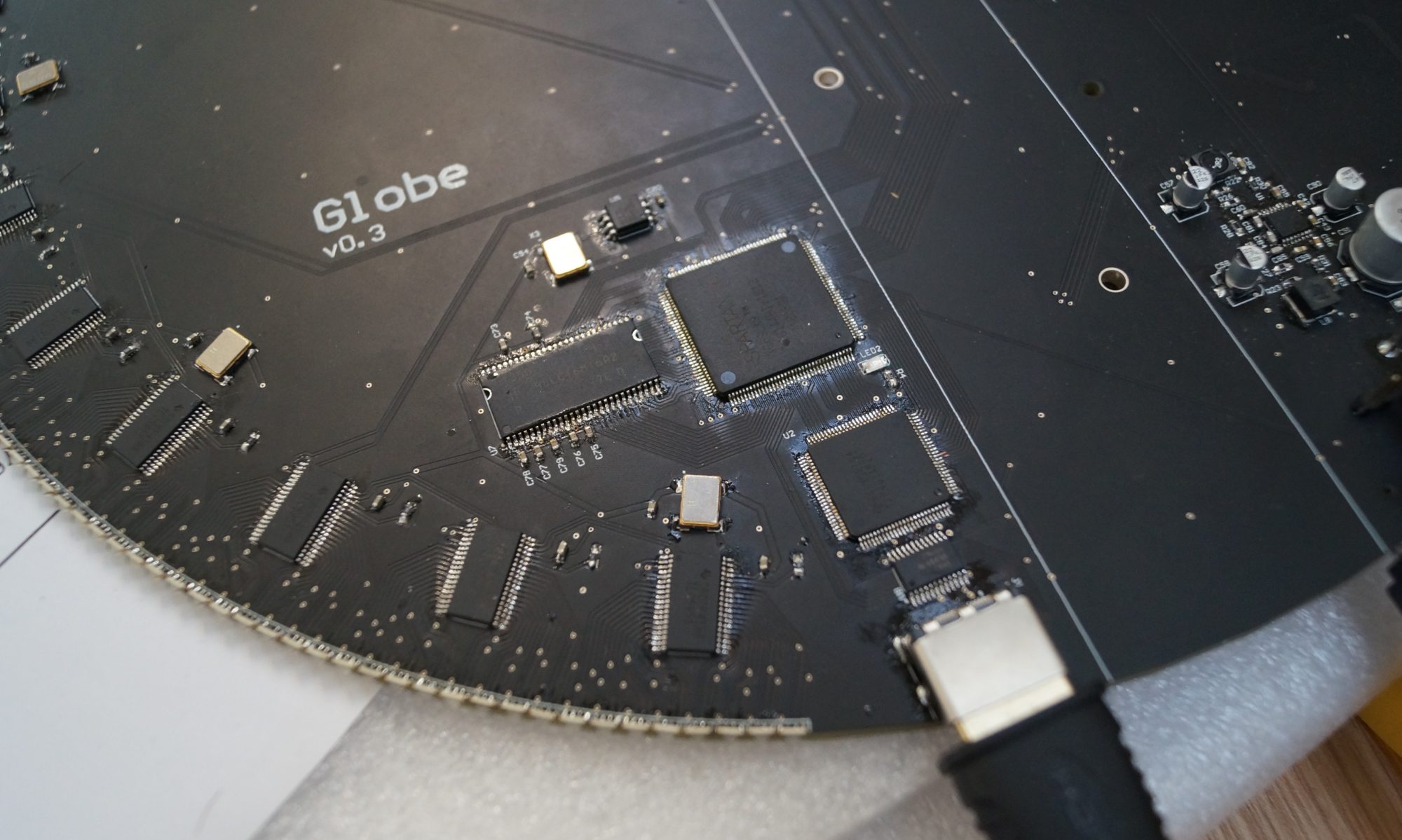PCBs are in from China. I always buy two since most of the cost goes into tooling and it’s always good to have a backup in case you accidentally screw one up beyond repair.
I used PCB Cart and I am pretty damn pleased with the service.
I wont go into too much detail about the PCB layout, aside from answering the question that most people are probably asking when looking at this; “why is there so much empty space in the middle of the board, it makes it look a bit strange?”. The answer to that is that I originally intended to design the board with big crescent slots cut out on either side to reduce air resistance when it’s spinning because without them it will be moving a fair amount of air. Unfortunately I am not a mechanical engineer and I really don’t know whether putting the slots in would cause the disk to become structurally unsound when spinning or even whether putting those slots in would help all that much after all it is the PCB that is closest to the edge that is travelling fastest and therefor going to have most air resistance. It is something I would love to investigate but I simply couldn’t afford to risk this PCB breaking. If the Kickstarter campaign gets funded I will definitely try sticking some in there, possibly with hilarious results.
I went for:
- 3.2mm PCB: MKI was made with a standard 1.6mm substrate which had a little bit of flex in it. Considering that I am spinning this board faster and that it’s slightly larger I wanted to ensure that flex was kept to a minimum in case it caused breaks in solder joints/traces. I can assure you all this board is very rigid, I might even be able to reduce the thickness to 2.4 or even 2mm. As with the lack of slots, better to pay a few $ extra to minimise the risk of the thing breaking apart.
- 2oz copper: The 5v power line is distributed to the LEDs in two large arc traces around the edge of the PCB. Without wanting these traces to become too wide and push all other components towards the centre I decided to bump up to 2oz copper.
- Silver immersion: Probably could have got away with HASL here but it only cost about $20 more and I was doing a lot of SMD soldering I thought it was probably for the best. It’s a slight departure from ENIG which is what I would normally opt for; I chose it because it is less likely to form a brittle joint and also happened to be a smidgen cheaper.
- Black solder mask: Generally I go for green solder masks because I’m poor and most of the time no one is going to see your PCB anyway. Since the whole point of this PCB is to be on display looking badass I decided to shell out a little more for black. While it tends to show up scratches a little more and is virtually impossible to see traces for visual inspection when you have to *ahem* cut them to fix an inevitable mistake you made, I am pretty damn please with the result.

